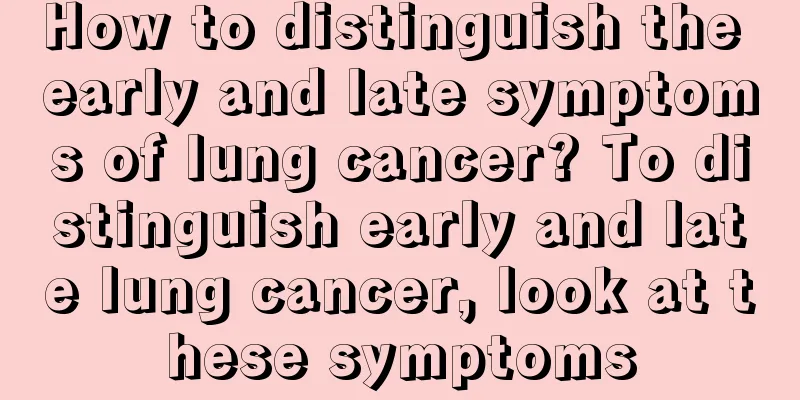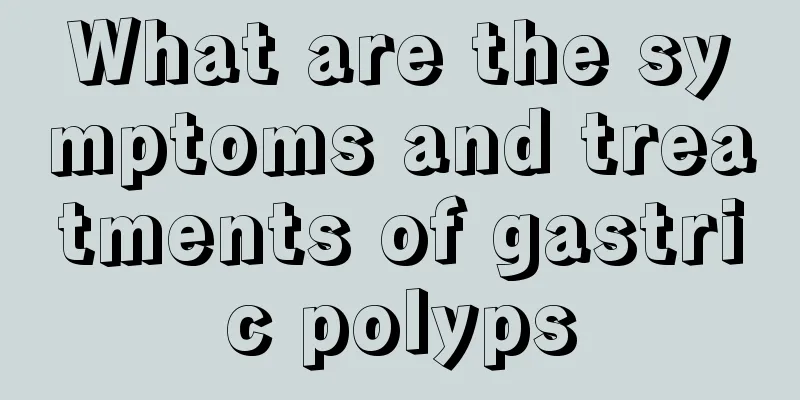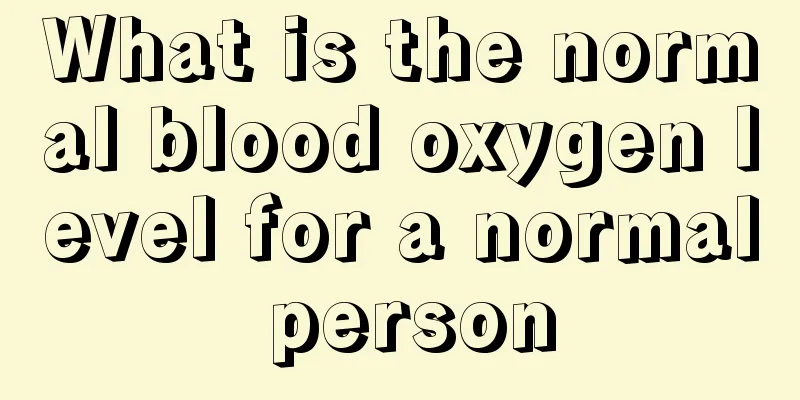How to distinguish the early and late symptoms of lung cancer? To distinguish early and late lung cancer, look at these symptoms

|
Lung cancer is a common respiratory disease. Due to changes in living environment, increasingly serious air pollution, and unhealthy lifestyles of some people, the disease has not been completely eliminated. Some patients have lung cancer without knowing it. So how do you tell if you have the disease? Early symptoms of lung cancer 1. Cough. Lung cancer grows on bronchial lung tissue, which usually causes respiratory irritation and irritating cough. 2. When a low-fever tumor blocks the bronchus, there is often an obstructive lung lobe with varying degrees of severity. In mild cases, there is only a low fever, while in severe cases, there is a high fever. The condition may temporarily improve after taking medication, but it will soon relapse. 3. Chest pain In the early stage of lung cancer, chest pain is mild, mainly manifested as dull pain, dull pain, and the location is not certain, and the relationship with breathing is also uncertain. If the pain persists, it means that the cancer may involve the pleura. 4. Blood in sputum. When tumor inflammation causes necrosis and capillary damage, there will be a small amount of bleeding, which is often mixed with sputum and appears intermittently or intermittently. Many lung cancer patients seek medical treatment because of blood in sputum. Lung cancer advanced symptoms 1. Hoarseness is the most common symptom. The recurrent laryngeal nerve that controls the left side of the vocal function descends from the neck to the chest, bypasses the large blood vessels of the heart and returns upward to the larynx, thereby controlling the left side of the vocal organ. 2. Facial and neck edema. On the right side of the mediastinum is the superior vena cava, which transports venous blood from the upper limbs and head and neck back to the heart. If the tumor invades the right side of the mediastinum and compresses the superior vena cava, it will initially cause the jugular vein to become swollen due to poor blood return, and eventually lead to facial and neck edema, which needs to be diagnosed and treated in a timely manner; 3. Shortness of breath Almost all patients with regionally spread lung cancer experience shortness of breath to varying degrees. Normal tissue fluid produced by the lungs and myocardium is returned by the lymph nodes in the middle of the chest. If these lymph nodes are blocked by tumors, this tissue fluid will accumulate in the pericardium to form pericardial effusion or accumulate in the chest cavity to form pleural effusion. Both of the above situations can cause shortness of breath. However, since many smokers have varying degrees of chronic lung disease, it is difficult to identify shortness of breath. In addition, since part of the lung tissue loses its respiratory function due to tumors, the entire respiratory function is impaired, resulting in breathing discomfort. This discomfort initially only occurs during exercise, but eventually it can also be felt during rest. |
>>: How to prevent liver cancer through diet? These 6 types of people are prone to liver cancer
Recommend
How to prevent flu
Influenza is actually a contagious cold. In life,...
Can I eat chili peppers when I have a cold?
Although colds occur frequently, we may not know ...
How much does it cost to cure liver cancer in its early stages? Three common treatments for early liver cancer
Patients with early liver cancer will experience ...
What to eat to make the body alkaline
Generally, vegetables and fruits are alkaline foo...
Is chemotherapy needed after surgery for early lung cancer? What should be paid attention to during chemotherapy for lung cancer?
Chemotherapy is usually required after surgery fo...
Blood pressure lowering pillow
When we go to sleep, we are all used to putting a...
Which groups of people are most likely to have cervical cancer? What are the treatments for cervical cancer?
According to official statistics from China, cerv...
Is it easy to get pregnant during menstruation?
The menstrual period is a process of corpus luteu...
How much water is used to make tea
I believe everyone has drunk tea in their daily l...
Disadvantages of Red Non-Soft Peach
Red not soft peaches are a type of peach that is ...
How to remove paint from clothes
How to remove paint from clothes? Today's lif...
What causes knee pain?
Knee pain is a common disease. As a patient, you ...
Symptoms of Non-Hodgkin's Lymphoma
Non-Hodgkin's lymphoma is a type of lymphoma....
What causes long-term anal itching
Anal pruritus is a localized neurological dysfunc...
What to do if your feet smell when wearing shoes
It is a very common phenomenon that your feet sme...









